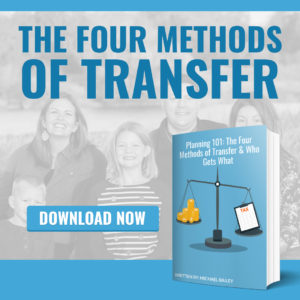
Years ago, I was in a professional networking group with an individual who wanted to know how to avoid probate. I discussed how they might use a trust, or joint ownership or joint tenancy for real estate, or a beneficiary’s deed, or other methods that do not need to go through probate. This person listened and said, “Yeah, sure, that is how people can pay you, but how can I do it without needing to pay for it?”
The individual from the networking group had described how they had all of their assets in investment accounts, or bank accounts. The individual told me that they knew if they put pay on death or transfer on death designations on all of those accounts, then the accounts would transfer according to those designations. The person told me they just needed to have me confirm it would work. They then went one step further to tell me that is why they didn’t need a will, and didn’t need me, which seemed kind of strange given that they had just asked me to confirm their plan would work.
I declined that invitation, as I am not super keen on giving free legal advice, nor am I free on endorsing someone else’s strategy. I also recall that I exited that professional networking group soon thereafter. I decided I did not really want to be associated with a group of people who did not understand the value of my services.
Of course, had the individual not been so rude and unprofessional, we could have had a conversation about how pay on death and transfer on death designations really are a great tool in estate planning, and they can avoid probate for certain assets. Pay on death designations and transfer on death designations apply to different types of accounts. Pay on death designations and transfer on death designations allow you to choose who will receive an asset, and that transfer will take place outside of probate. But, my professional opinion is that everyone still needs a will.
What is the Difference Between a Pay on Death Designation and a Transfer on Death Designation?
Although a pay on death design ation and a transfer on death designation function similarly, the type of account each applies to is different. Both types of designation allow you to designate who will receive the asset after you pass away. You can decide who will get the asset, let the entity that holds the asset know who the recipient will be. Upon your death the named person can then let the entity know you have passed away, and claim the asset.
ation and a transfer on death designation function similarly, the type of account each applies to is different. Both types of designation allow you to designate who will receive the asset after you pass away. You can decide who will get the asset, let the entity that holds the asset know who the recipient will be. Upon your death the named person can then let the entity know you have passed away, and claim the asset.
Pay on death designations generally are connected to bank accounts. The bank will have you fill out a form to name a person to receive money in the account when you die. The bank keeps this form on file, and the named beneficiary can go claim the money from the account, usually by filling out paperwork and giving the bank a copy of your death certificate.
Transfer on Death designations work the same way, but usually apply to investment accounts. The reminology is a bit different, but the transfer happens through the investment company as a contract transaction between the company and you, and not through probate.
Pay on Death and Transfer on Death Designations Take Precedence over a Will
Nearly everyone I meet with asks me if the will overrides a pay on death designation or a transfer on death designation. The answer is that a pay on death designation or a transfer on death designation controls what happens to the funds in the account with such a designation attached to the account. imply setting up a will does not change the pay on death designations or a transfer on death designations.
Watch Out for Potential Problems
Instead, you will need to check the listed beneficiaries of all pay on death designations or a transfer on death designations for every account you have to make sure everything agrees. You don’t want your will to conflict with your pay on death designations or a transfer on death designations. That is a great way to get conflict, fights, and legal challenges to your estate plan.
In addition to this potential issue, you also may run into the problem of old, outdated, or incorrect pay on death or beneficiary designations. I have had many clients who have divorced and remarried. They are shocked to find that an investment account still had an ex-spouse named as a beneficiary of a transfer on death designation, or pay on death designation. I am always happy when people double check their pay on death designations, transfer on death designations, and beneficiary designations they avoid money going somewhere they don’t want it to go!
Of course, if you are like the person from my networking group, and want to have all of your accounts set up with pay on death designations or transfer on death designations, then you create a lot of work for yourself. You will need to keep track of every bank, financial, and investment account you have and keep those up to date every time you make a change to anything, or add a new account. Most of us, probably including you, don’t have the time or inclination to keep track of all of your accounts, all the time. If you do, excellent! If not, then you probably want to consider not relying solely on pay on death and transfer on death designations.
You Still Need a Will
Your will may not override a pay on death or beneficiary designation, but it does serve as a safety net for financial accounts that do not have such a designation. The will can distribute any assets without a pay on death or beneficiary designation to the people you pick, and ensures your wishes are carried out. Even if you have pay on death or beneficiary designation, you still want a will.
 Everything Should Work Together
Everything Should Work Together
You want your will and your pay on death or beneficiary designations to work harmoniously. By working with an experienced estate planning attorney, you can have everything work together and accomplish what you want. You can make an appointment to discuss making that happen by going here.

 720-730-7274
720-730-7274










